Debunk a Myth – young dancers can strength train!
We know that strength training is good for us and good for dance, but what about youths? There is still some debate around whether strength training is ok for children and whether it can negatively affect their development.
Answering some questions on why young dancers should be doing strength and conditioning…
Will strength training with weights impact development in youths?
It has been proven through scientific research that strength and conditioning is not harmful to their development. Children who are pre-puberty or adolescence (either during or post puberty) can use weights and do not have to wait until they are 16+. In fact, the research shows that supervised strength training is actually safer than nearly all other sports in terms of injury rates.
strength and conditioning is not harmful to their development. Children who are pre-puberty or adolescence (either during or post puberty) can use weights and do not have to wait until they are 16+. In fact, the research shows that supervised strength training is actually safer than nearly all other sports in terms of injury rates.
The long term effects of strength training in youths have shown that it does not negatively impact growth and maturation and S & C can actually enhance bone development in younger children.
Why do young dancers need strength and conditioning?
In dance we are fighting a bit of traditional viewpoint that is something along the lines of – we have managed without strength and conditioning for so many years so why do we need it now? Well, for the young dancer S & C will enable them to jump higher, turn faster, hold positions for longer, move with greater control. It helps reduce the risk to injury as it will increase stability in the joints, strengthen muscles and help to equal any muscle imbalances. Why would you not want this for your students?
 Dance can be a challenging activity and can be demanding on the body, S & C can help the body to withstand these demands. Not only this, S & C can give the young dancer greater body awareness.
Dance can be a challenging activity and can be demanding on the body, S & C can help the body to withstand these demands. Not only this, S & C can give the young dancer greater body awareness.
Dancers often have in innate need to be the best they can be, so why not give them the tools to help this to happen? Performance enhancement happens due to increased strength, power and endurance all of which occurs with strength and conditioning.
How do I approach strength and conditioning with my young dancers?
My biggest bit of advice – make sure they are being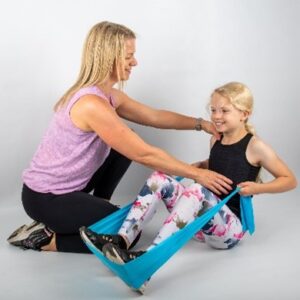 instructed by someone who knows what they are doing!!!
instructed by someone who knows what they are doing!!!
Young dancers need to be ready to train – can they listen to instruction and adapt what they are doing when corrected? Yes? Then they are ready!
Before any load is added, they need to be able to do the basic movements with their bodyweight first – i.e. squats, lunges, deadlifts, push ups, planks etc. In simple terms, they need to earn the right to progress just as they would in any of their dance movements and syllabus work.
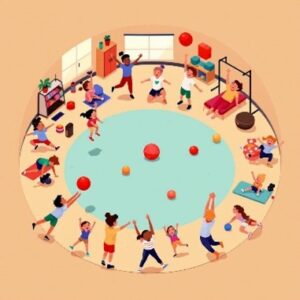 Make sure that the sessions are adapted for each child and they are programmed for their training age and not their biological age. Be aware of periods of growth and remember that they are not young adults – the sessions should be fun, enjoyable and appropriate for their age!
Make sure that the sessions are adapted for each child and they are programmed for their training age and not their biological age. Be aware of periods of growth and remember that they are not young adults – the sessions should be fun, enjoyable and appropriate for their age!
Go ahead and make it a part of your curriculum!!
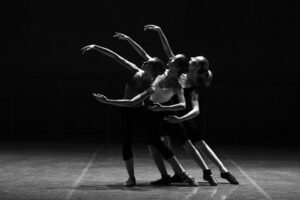 te to my career was a fairly standard one; after school dance lessons, vocational college, worked as a freelance dancer, taught……. (see my previous blog for full details 😉). However, there are many different paths within the dance industry that can be taken, even if they aren’t the ones we planned. It can be disheartening for a performer not to walk straight into their dream job and this can lead to, in a worst case scenario, giving up on this dream because they think they have failed. This can in some cases be attributed to the pressure that is instilled during training, that ‘performing’ is the only measurement of success following training, but a dancer should be open to other possibilities as it could lead in to an unexpected and exciting journey. I think it is, in part, the responsibility of the teachers to make students aware of the importance of networking, of talking to people and making connections. Encouraging students to understand that building up a portfolio career, trying new things that maybe out of our comfort zone, can be a positive thing.
te to my career was a fairly standard one; after school dance lessons, vocational college, worked as a freelance dancer, taught……. (see my previous blog for full details 😉). However, there are many different paths within the dance industry that can be taken, even if they aren’t the ones we planned. It can be disheartening for a performer not to walk straight into their dream job and this can lead to, in a worst case scenario, giving up on this dream because they think they have failed. This can in some cases be attributed to the pressure that is instilled during training, that ‘performing’ is the only measurement of success following training, but a dancer should be open to other possibilities as it could lead in to an unexpected and exciting journey. I think it is, in part, the responsibility of the teachers to make students aware of the importance of networking, of talking to people and making connections. Encouraging students to understand that building up a portfolio career, trying new things that maybe out of our comfort zone, can be a positive thing.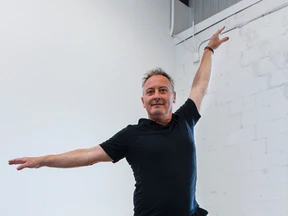 I have learnt later on in my career how important reaching out to people within the industry can be. How stepping out of your comfort zone and making new connections can lead to exciting and new possibilities. In fact, I wish I had done it sooner. I have realised that many industry professionals are passionate about sharing their expertise and talking about how they have achieved their goals and offer advice. These connections can lead to learning new skills, working with different people and opening up new opportunities that you didn’t know you needed! Listening to a podcast recently on ResDance by Dr Gemma Harman with Anna Watkins highlighted an interesting point that centred around the benefit of working in different roles, in particular those that involve leadership. They discussed how this can give you empathy for your colleagues who are in those positions as you understand what it is like to be a leader and the demands this position comes with. You gain a different perspective both when you are being a leader and when you are not.
I have learnt later on in my career how important reaching out to people within the industry can be. How stepping out of your comfort zone and making new connections can lead to exciting and new possibilities. In fact, I wish I had done it sooner. I have realised that many industry professionals are passionate about sharing their expertise and talking about how they have achieved their goals and offer advice. These connections can lead to learning new skills, working with different people and opening up new opportunities that you didn’t know you needed! Listening to a podcast recently on ResDance by Dr Gemma Harman with Anna Watkins highlighted an interesting point that centred around the benefit of working in different roles, in particular those that involve leadership. They discussed how this can give you empathy for your colleagues who are in those positions as you understand what it is like to be a leader and the demands this position comes with. You gain a different perspective both when you are being a leader and when you are not.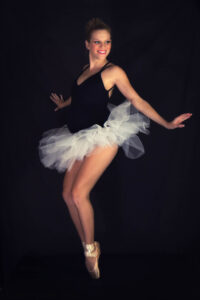
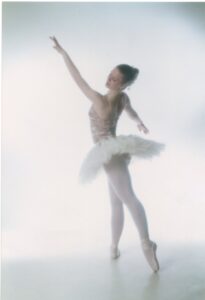 I followed the same route as many have in the dancing world. Ballet, modern, tap, at a local dance school then headed off to dance college. I was lucky enough to go to what was considered a good dance school with forward thinking teachers, but still had injuries during my teenage years, like most of my friends. These injuries followed me to college where they got worse and with the time being what it was back then, when anyone was injured, they had to sit on a cold, hard floor and watch classes. Looking back, this was by no means a reflection of my teachers, more a reflection of the lack of knowledge and understanding all those years ago.
I followed the same route as many have in the dancing world. Ballet, modern, tap, at a local dance school then headed off to dance college. I was lucky enough to go to what was considered a good dance school with forward thinking teachers, but still had injuries during my teenage years, like most of my friends. These injuries followed me to college where they got worse and with the time being what it was back then, when anyone was injured, they had to sit on a cold, hard floor and watch classes. Looking back, this was by no means a reflection of my teachers, more a reflection of the lack of knowledge and understanding all those years ago.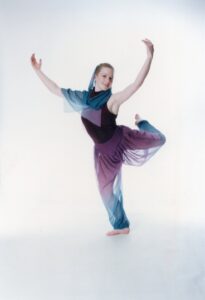 Fast forward a bit to my dancing years touring Italy and the beautiful country that it is and enjoying Germany for 3 months. I was happy to go along with an early warm-up only to get cold again, or even no warm-up when touring as there simply wasn’t the time or space. Given my background and injury history, this unsurprisingly left me with more back problems. So off I go to a physio who was well respected and a chiropractor who was recommended, but neither dance specialists, and after several sessions and a lot of money later I was informed that if I continue to dance, I might end up in a wheelchair when I am older!! Well, I was in my early 20’s at this stage and that was a scary thing to be told and as I didn’t know any better so trusted their opinion, that was the end of my performing career. How did I feel? Gutted, and in all honesty, I struggled to go and watch dance performances for a long time. Like, my teachers, I placed no blame with the professionals, they were doing their job to the best of their knowledge with little understanding supplementary training. So, I accepted it and moved onto teaching the next generation.
Fast forward a bit to my dancing years touring Italy and the beautiful country that it is and enjoying Germany for 3 months. I was happy to go along with an early warm-up only to get cold again, or even no warm-up when touring as there simply wasn’t the time or space. Given my background and injury history, this unsurprisingly left me with more back problems. So off I go to a physio who was well respected and a chiropractor who was recommended, but neither dance specialists, and after several sessions and a lot of money later I was informed that if I continue to dance, I might end up in a wheelchair when I am older!! Well, I was in my early 20’s at this stage and that was a scary thing to be told and as I didn’t know any better so trusted their opinion, that was the end of my performing career. How did I feel? Gutted, and in all honesty, I struggled to go and watch dance performances for a long time. Like, my teachers, I placed no blame with the professionals, they were doing their job to the best of their knowledge with little understanding supplementary training. So, I accepted it and moved onto teaching the next generation.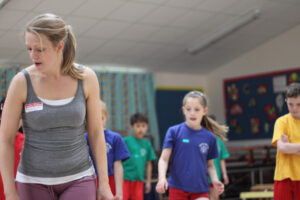 My teaching career began and I loved passing on my passion for dance to others, however, strength and conditioning was not on the radar. Having also worked in a gym I endeavoured to do some exercises with some students which was challenging due to limited class time, but I realised the value in working with the students in this way. This curiosity stayed with me as I juggled family life and diverted my career to a BA in dance Education, where I taught dance in primary and secondary education as well as managing community and charity dance events. Fast forward again and we come to the joy that was COVID and all my work/projects came to a halt. However, some things are meant to be as an opportunity came up to study Dance Science at Trinity Laban, a course that I had seen, desperately wanted to do, but did not think I would be able to do for a few years. Not a chance I wanted to pass up as it was everything I wanted to learn about. The programme did not disappoint, with all now falling into place. Not only did I gain invaluable skills that I was passionate about, it made me reflect upon my training and the impact dance science could have had on my dancing career. Far from being upset that my dancing was short lived, the MSc encouraged me to go on and learn more, so did a level 4 strength and conditioning and menopause and training course.
My teaching career began and I loved passing on my passion for dance to others, however, strength and conditioning was not on the radar. Having also worked in a gym I endeavoured to do some exercises with some students which was challenging due to limited class time, but I realised the value in working with the students in this way. This curiosity stayed with me as I juggled family life and diverted my career to a BA in dance Education, where I taught dance in primary and secondary education as well as managing community and charity dance events. Fast forward again and we come to the joy that was COVID and all my work/projects came to a halt. However, some things are meant to be as an opportunity came up to study Dance Science at Trinity Laban, a course that I had seen, desperately wanted to do, but did not think I would be able to do for a few years. Not a chance I wanted to pass up as it was everything I wanted to learn about. The programme did not disappoint, with all now falling into place. Not only did I gain invaluable skills that I was passionate about, it made me reflect upon my training and the impact dance science could have had on my dancing career. Far from being upset that my dancing was short lived, the MSc encouraged me to go on and learn more, so did a level 4 strength and conditioning and menopause and training course.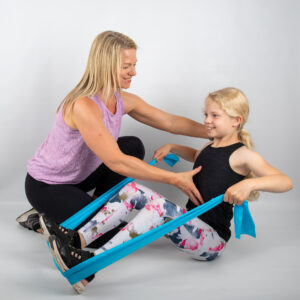 I am now passionate about disseminating what I have learnt to dancers at every stage of their career, starting where I did at the grass roots level and Performing Arts Development was established . Giving more knowledge to teachers, to pass onto their students, and dancers to be able to help elongate their own careers and navigate it safely for longevity. Encouraging performers and educators to ask questions, to want to challenge and work with traditions and make new ways of working to improve dance environments across the sector.
I am now passionate about disseminating what I have learnt to dancers at every stage of their career, starting where I did at the grass roots level and Performing Arts Development was established . Giving more knowledge to teachers, to pass onto their students, and dancers to be able to help elongate their own careers and navigate it safely for longevity. Encouraging performers and educators to ask questions, to want to challenge and work with traditions and make new ways of working to improve dance environments across the sector.